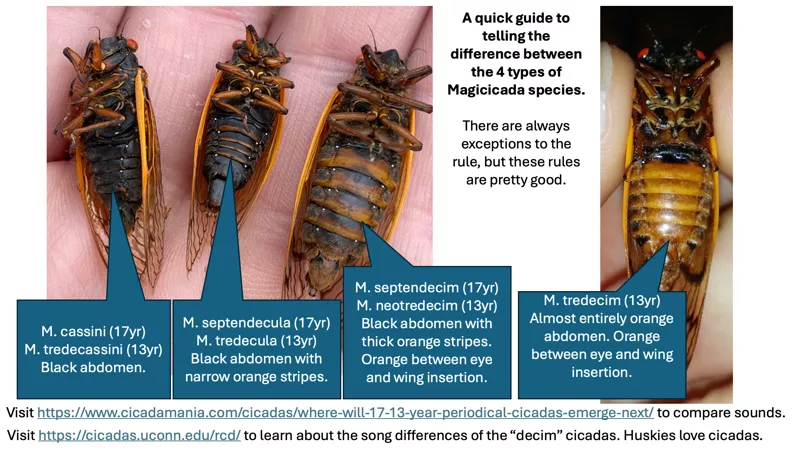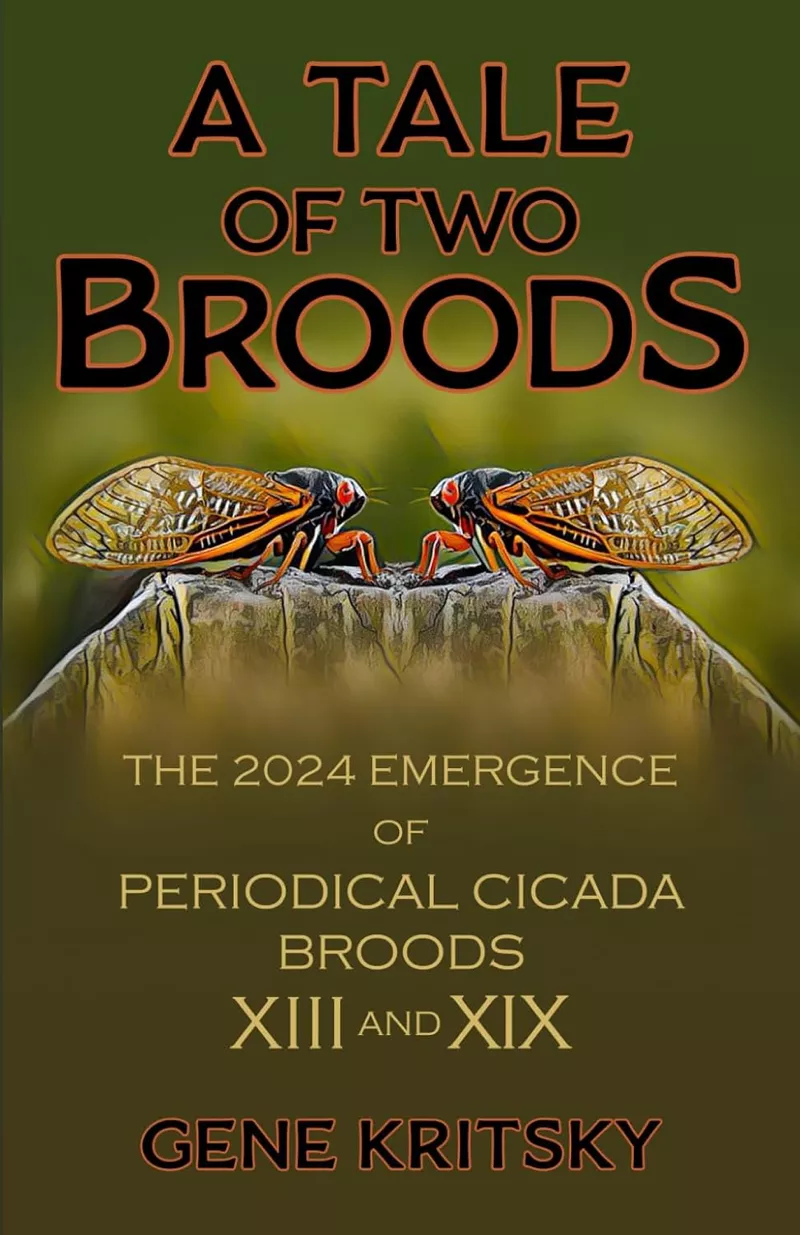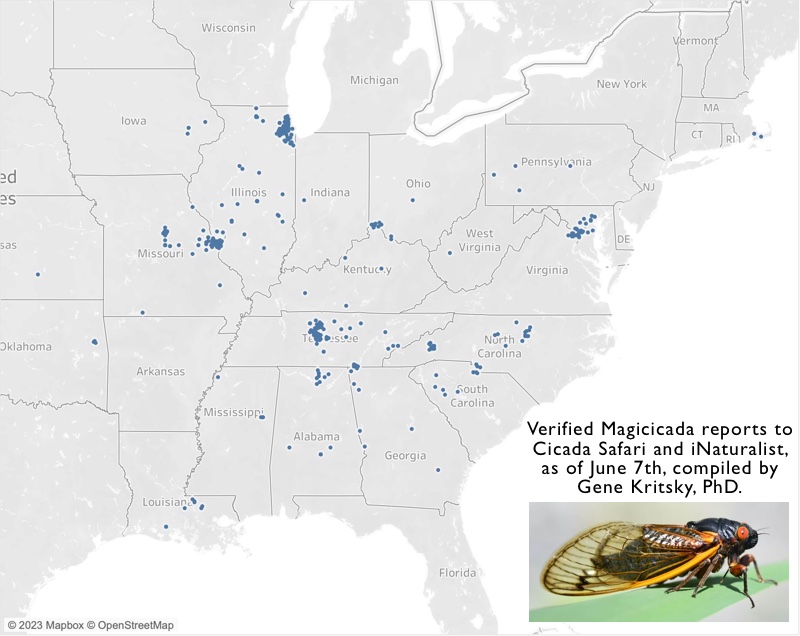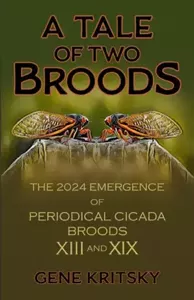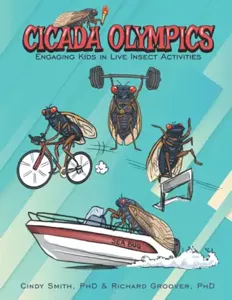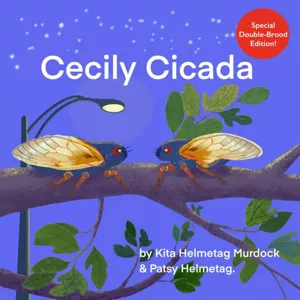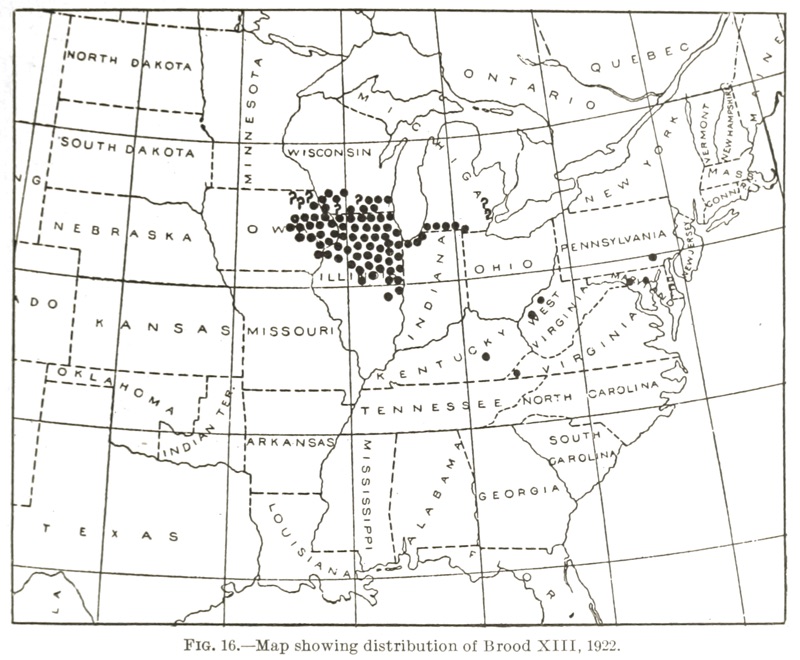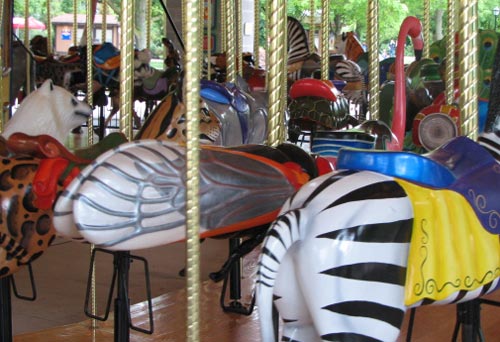Updated on 5/1/2024.
Periodical Cicadas (“Locusts”) of North America:
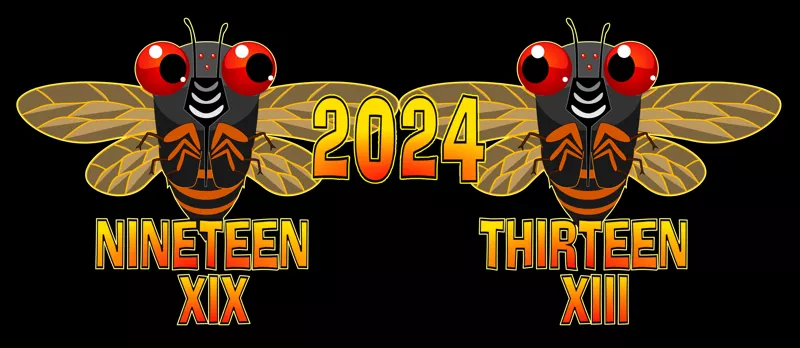
Get this image on a shirt!
2024 is the big year in the U.S.A. Two Magicicada Broods, Brood XIII (Thirteen) and Brood XIX (Nineteen, aka the Great Southern Brood) will emerge in the United States. People call these cicadas “locusts”, but they are cicadas.
Get ready for a zillion of these (if you’re in the right location):
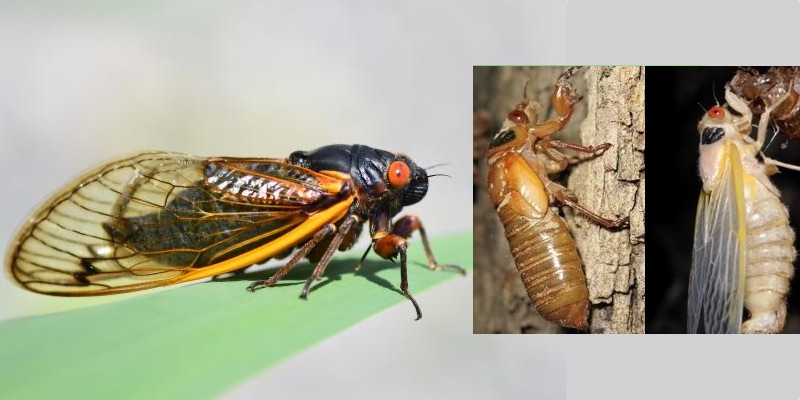
Here’s a chart that shows where Brood XIX and Brood XIII are in their emergence cycle:
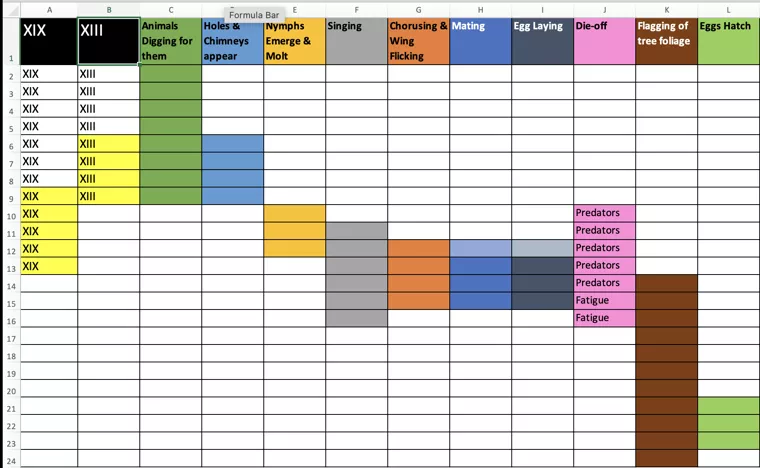
Download an Excel of the Timeline.
about Brood XIX (WHICH HAS BEGUN TO EMERGE):
Brood XIX has a 13-year cycle, features four species, and is found in:
Alabama, north-west half of Arkansas, north-west Georgia, southeast Iowa, southern Illinois, south-west Indiana, western Kentucky, northern Louisiana, Maryland in St. Mary’s County, Missouri, Mississippi, central North Carolina, eastern Oklahoma, western South Carolina, Tennessee, eastern Virginia.
Big cities in the range of Brood XIX include Nashville (TN), Charlotte (NC), and St. Louis (MO), keeping in mind that they prefer the suburbs.
Read lots more about Brood XIX.
about Brood XIII:
Brood XIII has a 17-year cycle, features three species, and is found in:
Eastern Iowa, northern Illinois, Indiana, near Lake Michigan, and southern Wisconsin. Though likely extinct, the brood once appeared in Michigan along the border with Indiana.
The largest city in Brood XIII is Chicago, Illinois, and the Lake County Forest Preserve in the suburbs of Chicago is a good place to visit for tourists. The Michigan part of the brood is likely extinct, so do not look there if you are a tourist.
Read lots more about Brood XIII.
Will the broods overlap?
They do not overlap! But, they come close in some areas.
Both Brood XIX and XIII exist in Macon, Sangamon, Livingston, and Logan counties in Illinois. The easily accessible place they come closest to overlapping is Springfield, Illinois, which is in Sangamon County. Compare this Brood XIII map with this Brood XIX.
People wonder what would happen if members of the broods mate. Their offspring would likely live and adopt either a 13 or 17-year life cycle. This will likely not happen because they don’t overlap, however, one experiment would be to get similar species from XIX and XIII and put them in an enclosure to see if they will mate.
Resources to get you through 2024
- A Tale of Two Broods: The 2024 Emergence of Periodical Cicada Broods XIII and XIX book by Dr. Gene Kritsky.
- The Cicada Safari app for iOS and Android to find and report cicadas.
- The University of Connecticut Periodical Cicadas website.
- An iNaturalist project was set up to track them.
Stragglers from other broods:
Magicicada stragglers from other broods will emerge in small numbers.
So far Brood XXIII and Brood XIV stragglers have been reported!
Annually emerging cicada species of North America:
In the United States, annual cicada emergences will happen like they did in 2023, with few surprises. Cicadas in southern locations will emerge first, with Quesada gigas emerging early on. Look at the chart on the cicada sounds page for a calendar of annual cicada emergences.
The cicadas that have a camouflage appearance are Neotibicen, like Neotibicen linnei aka Linne’s Cicada, or Megatibicen, Megatibicen resh aka Resh Cicada, and they are annual cicadas.
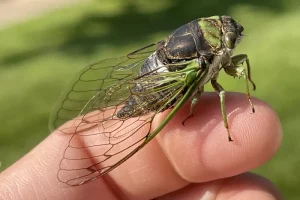
A Neotibicen tibicen is perhaps the most common annual cicada in North America.
Proto-periodical cicadas of North America (the fly fisher’s friend):
Emergences of proto-periodical cicadas depend on multiple factors including the species, crowding, location, and cumulative rainfall, making it hard to predict when they will emerge. We can’t say exactly when they’ll emerge in your location. Platypedia species, in particular, represent a “boon” to fly fishers, as they send fish into a feeding frenzy. The best bet for Platypedia cicadas is to tune into iNaturalist from April to June.
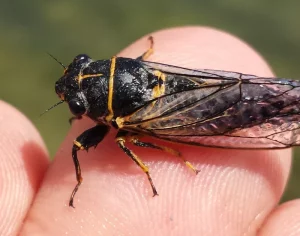
A Platypedia cicada, photo by CGWiber.
International species — World Wide Cicadas
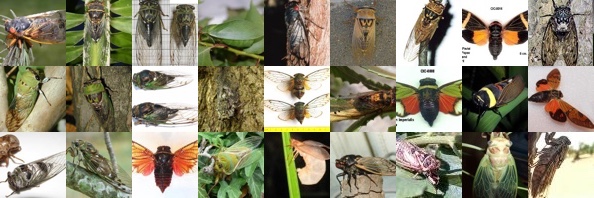
Generally speaking, cicadas in the Northern Hemisphere emerge somewhere between March and September, and in the Southern Hemisphere, somewhere between September and March. In places closer to the equator, like Ecuador, you can have cicadas for almost the entire year. You can use sites like iNaturalist and Cicada Mania to do research. iNaturalist compiles cicada identifications, including photos, sounds, and geographic data. Cicada Mania contains basic facts and historical and cultural knowledge.
There are periodical species of cicadas in Fiji and India. UPDATE! The “Leap-Year” brood of the Indian periodical cicada Chremistica ribhoi is currently emerging in the Kamrup District of Assam, India (4/25/2024).
iNaturalist by continent
on Cicada Mania by continent
You can also explore specific countries like…
iNaturalist by country:
on Cicada Mania by country:
More to come. Here is the 2023 Forecast.
